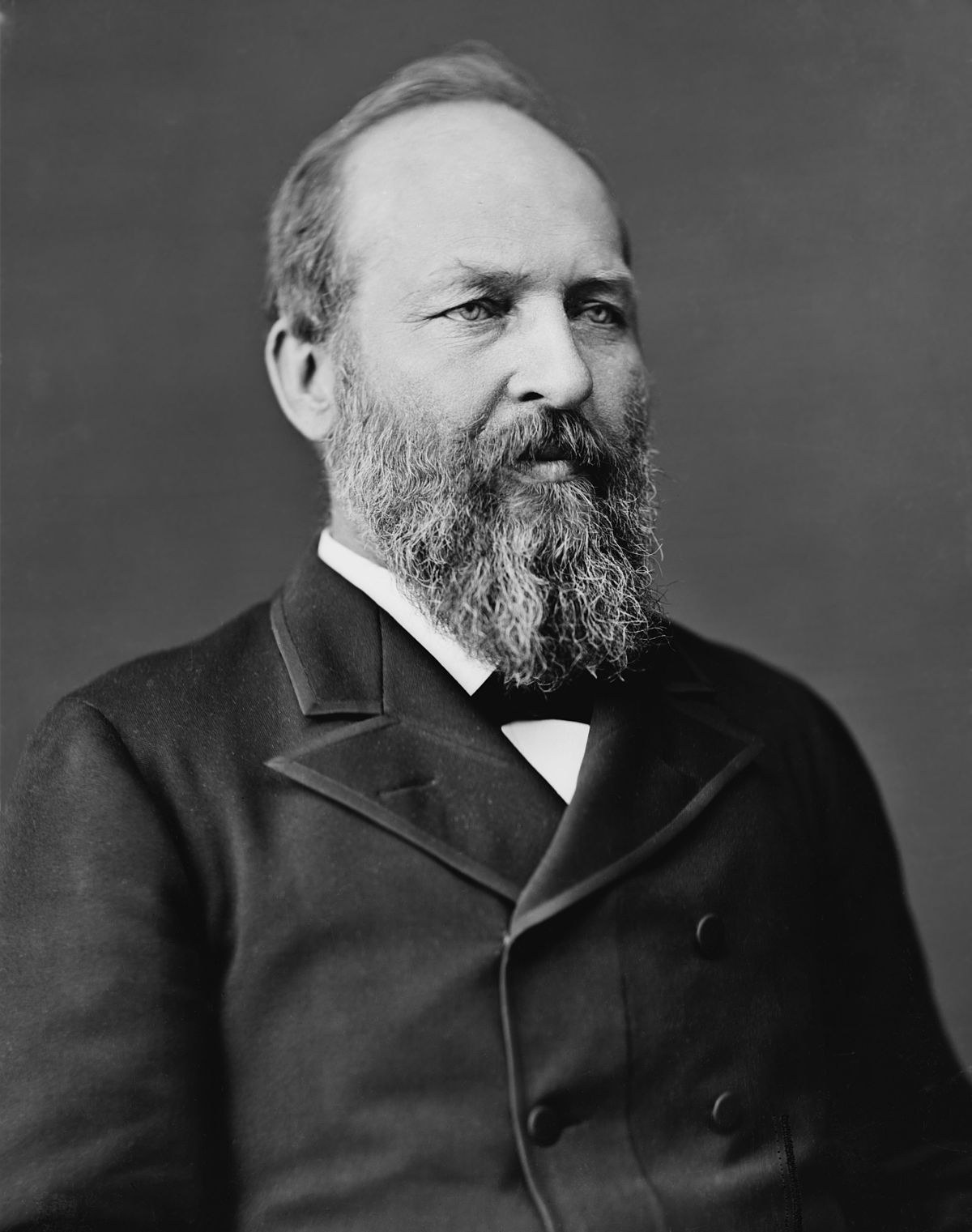James Garfield is best known as the 20th president of the United States. He was assassinated after only a few months in office.

James Garfield was born in Orange Township, Ohio, on November 19, 1831. Garfield rose from humble beginnings to serve as a college president, a nine-time congressman, and military general before his election to the United States presidency in 1881. As the 20th U.S. president, Garfield’s agenda of civil service reform and civil rights was cut short when he was shot by a disgruntled office seeker in July 1881.
Early Life
James Abram Garfield was born on November 19, 1831, in a log cabin in Orange Township, Ohio. Garfield’s father, a wrestler, died when Garfield was an infant.
Garfield excelled in academics, particularly Latin and Greek. From 1851 to 1854, he attended the Western Reserve Eclectic Institute (later renamed Hiram College), and later enrolled at Williams College. After completing his studies, Garfield returned to the Eclectic Institute as an instructor and administrator. In his spare time, he spoke publicly in support of the Republican Party and abolition. On November 11, 1858, Garfield married Lucretia Rudolph, a former pupil. They ultimately had seven children.
In 1859, Garfield began to study law. At the same time, he embarked on a career in politics. He was elected to the Ohio State Senate in 1859, serving until 1861.
Civil War and Congressional Career
In the summer of 1861, Garfield was commissioned a lieutenant colonel in the Union Army. Later that year, he was promoted to the rank of brigadier general, commanding a brigade at the Battle of Shiloh in 1862.
Garfield’s political career continued during wartime. In October 1862, he won a seat in Congress, representing Ohio’s 19th Congressional District. After the election, Garfield relocated to Washington, where he developed a close alliance with Treasury Secretary Salmon P. Chase. Garfield became a member of the Radical Republicans, led by Chase, and found himself frustrated by moderates including Abraham Lincoln.
Garfield not only favored abolition, but also believed that the leaders of the rebellion had forfeited their constitutional rights. He supported the confiscation of southern plantations and the punishment of rebellion leaders.
Following President Lincoln’s assassination, Garfield attempted to ameliorate the strife between his own Radical Republicans and the new president, Andrew Johnson. When Johnson undermined the Freedman’s Bureau, however, Garfield rejoined the Radicals, subsequently supporting Johnson’s impeachment.
Presidency
Garfield was nominated as the Republican candidate for the presidency in 1880 as a compromise. The deeply divided convention nominated Chester A. Arthur, a Stalwart Republican, for the vice presidency. Garfield and Arthur were elected to office over Democratic candidate Winfield S. Hancock.
Office-seekers besieged Garfield immediately following his election, convincing the new president of the importance of civil service reform. During his limited time in office, Garfield managed to initiate reform of the Post Office Department, and to reassert the superiority of the office of the president over the U.S. Senate on the issue of executive appointments.
Garfield also pledged to commit himself to the cause of civil rights. He recommended a universal education system funded by the federal government, in part to empower African Americans. He also appointed several former slaves, including Frederick Douglass, to prominent government positions.
• James Abram Garfield was the 20th president of the United States, serving from March 4, 1881 until his death by assassination six and a half months later. He was the first sitting member of Congress to be elected to the presidency, and remains the only sitting House member to gain the White House.
• Born: November 19, 1831, Moreland Hills, OH
• Full name: James Abram Garfield
• Assassinated: September 19, 1881, Elberon, Long Branch, NJ
• Years of service: 1861 to1863
• Presidential term: March 4, 1881 – September 19, 1881
• Buried: Lake View Cemetery, OH
• First president to be elected to the presidency directly from the House of Representatives.
• First president to be left-handed or ambidextrous.
• First president to die before reaching the age of 50.
• First president to have served as a university president.
